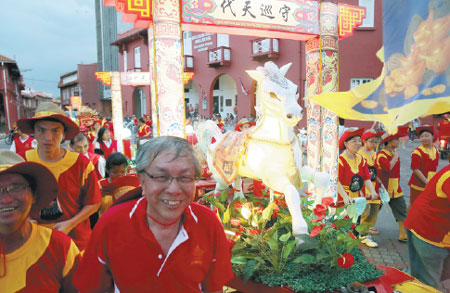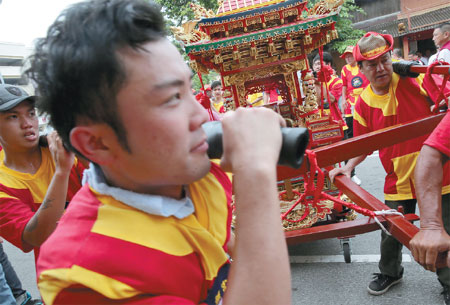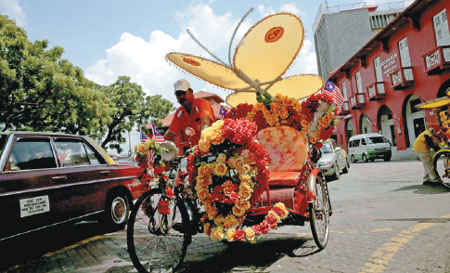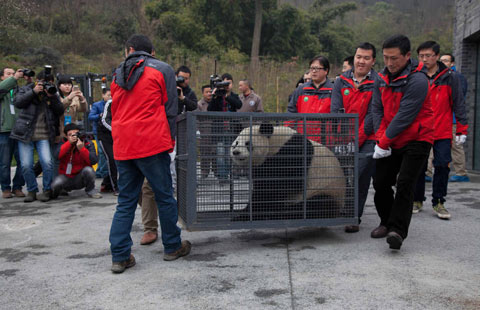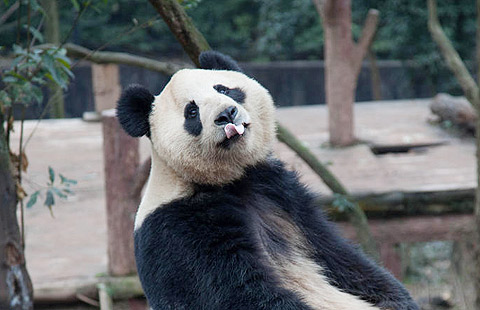Malacca interlude
Updated: 2014-02-27 07:31
By Pu Zhendong (China Daily)
|
|||||||||||
For centuries, this port city has attracted sailors, traders and adventurers of every race and creed. Pu Zhendong soaks up the history, the lore and the culture today.
Meandering through the ancient streets of Malacca, I was often struck by moments of familiarity and strangeness, awed by how a small city can peacefully assimilate Chinese, European and Muslim influences. It is a meeting point of East and West, which attracted the Chinese admiral Zheng He in the 15th century, the Portuguese general Alfonso de Albuquerque in the early 16th century and the Catholic missionary Francis Xavier in the mid-16th century, says Idris Haron, the chief minister of Malacca state in Malaysia. A visitor can hear the long call for prayer lingering above the Kampung Kling Mosque, see the ruins of St. Paul's Church silhouetted by the setting sun, and smell the burning joss sticks and candles inside the Cheng Hoon Teng temple.
It is a place that invites nostalgia for an Asia that used to be slow, sleepy and forgotten. As early as the 13th century, Prince Parameswara, a Hindu political refugee from Sumatra, founded the city on the site where he saw his dog chasing a chevrotain, also known as mouse deer, and converted the land to Islam.
The Chinese came next, with Admiral Zheng's fleet. Malacca became a tributary nation under the protection of China's Ming Dynasty (1368-1644).
From 1551 to 1946, the port city was successively colonized by Portugal, the Netherlands and the United Kingdom.
Like Carthage, Malacca prospered throughout history because of its strategic location on the Strait of Malacca, and it grew into a bustling, cosmopolitan commercial hub connecting Asia, the Middle East and Europe.
However, in the 17th century, the conquerors began to lose interest in developing the city. The Dutch favored Jakarta while the British preferred Singapore. With its river silted up, Malacca gradually lost its luster.
By the time British novelist Somerset Maugham arrived in Malacca at the beginning of the 1920s, the city had "the sad and romantic air of all places that have once been of importance and live now in the recollection of a vanished grandeur".
It is not difficult to imagine Maugham wandering along the narrow alleys through the colonial buildings, savoring a glass of home-brewed liquor and relaxing under an Indian gooseberry tree.
Now Malacca is experiencing a rebirth. It was named a UNESCO World Heritage City in 2008 and has been attracting an increasing number of tourists from around the world. The local government seems to have made painstaking efforts to return the city to its past glory. In 2001, the government embarked on the Melaka River beautification project, costing some $65 million, and the improved management of the waterways over the past decade led to Malacca's resurgence, according to the chief minister.
Haron says the government has turned the once-dirty, eyesore river into a development opportunity. "Malacca is a resource-less state. All we have is the river and the ingenuity of the people," he says. "We dredged the river course, cleaned the sewage and opened a cruise service. Now the 4.9-kilometer-long river is a tourism icon of Malacca."
It takes 45 minutes to cruise the river. One can get a fantastic overview of the city's texture and history. The colorful murals and graffiti on the riverbanks, of poetic couplets in Chinese calligraphy or the image of a Malay girl in hijab, give a new perspective on the city.
The day we arrived in Malacca was a very special one for the city. The local Chinese temple, Lian Puan Kiong, was hosting a parade that is held once very 10 years to celebrate the divine tour of the deity and the anniversary of the temple, which is 80 years old.
More than 1,000 participants and spectators took to the narrow streets. The disciples carried the sedan chair with the statue of the god inside, beat drums and performed a dragon dance. Every time it passed a temple, the parade stopped and everyone prayed for a good harvest, peace and prosperity.
Ong Tee Ching, a 50-year-old owner of a local appliance store, was walking in the parade with his two sons. He says that in Malacca, such an event was held quite often but the religious element had been replaced by a pursuit of cultural identity and integration.
"More and more Malays and Indians, as well as foreign visitors, join in our procession," he says. "Everyone deserves to enjoy this cultural carnival."
Contact the writer at puzhendong@chinadaily.com.cn.
|
A parade is staged at Lian Puan Kiong in Malacca, Malaysia, to celebrate the divine tour of the deity and the anniversary of the temple's construction. |
|
More than 1,000 participants and spectators join the parade. |
|
Disciples carry the sedan chair with the statue of the god inside, beat drums and perform a dragon dance. Photos by Jiang Dong / China Daily |
|
A rider of the traditional flower-decorated tricycle waits for customers on a street of Malacca. |
(China Daily 02/27/2014 page19)
Today's Top News
Ukraine disbands riot police unit
Putin puts troops in W.Russia on alert in drill
Construction of China-Russia railway bridge starts
Turks stage protests demand PM's resignation
Forecast:China to lower growth rate
Italian new govt wins vote of confidence
Ukraine enters uncharted water
Li urges stronger S. China Sea ties
Hot Topics
Lunar probe , China growth forecasts, Emission rules get tougher, China seen through 'colored lens', International board,
Editor's Picks
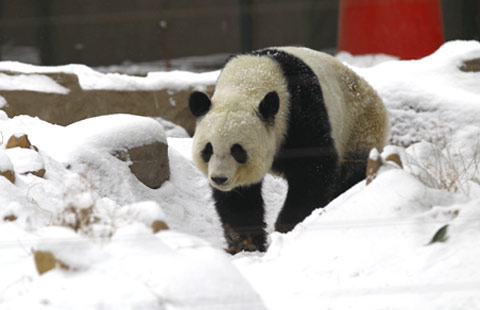
|
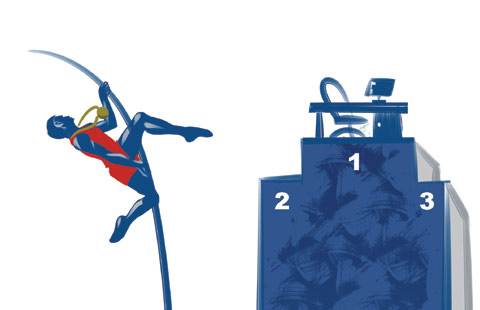
|

|

|

|
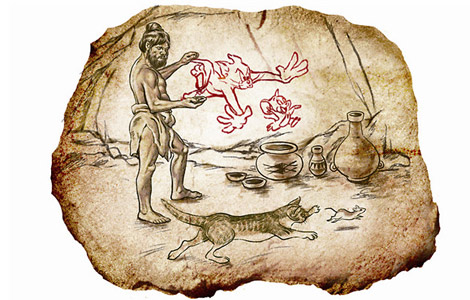
|
